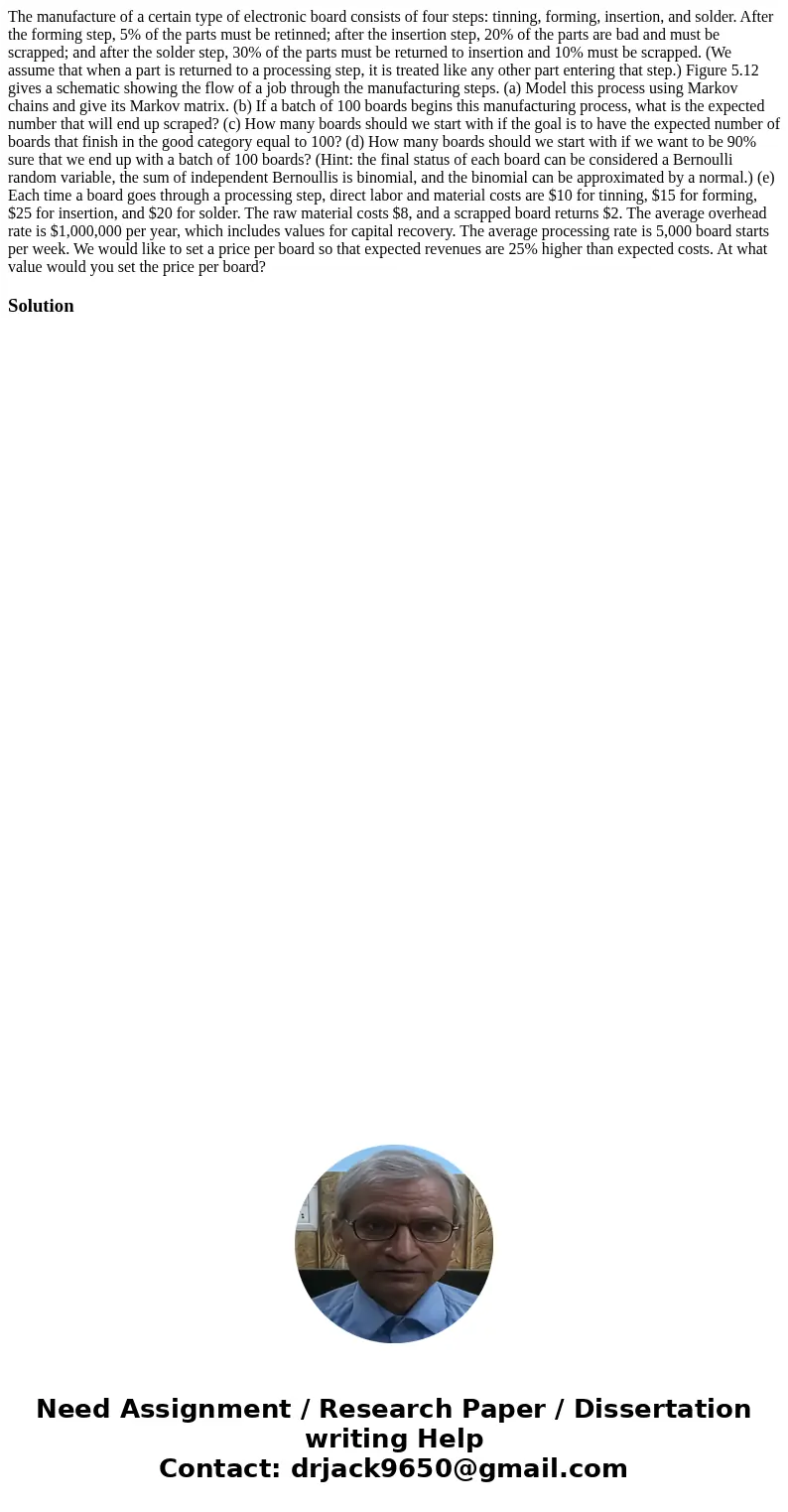The manufacture of a certain type of electronic board consis
The manufacture of a certain type of electronic board consists of four steps: tinning, forming, insertion, and solder. After the forming step, 5% of the parts must be retinned; after the insertion step, 20% of the parts are bad and must be scrapped; and after the solder step, 30% of the parts must be returned to insertion and 10% must be scrapped. (We assume that when a part is returned to a processing step, it is treated like any other part entering that step.) Figure 5.12 gives a schematic showing the flow of a job through the manufacturing steps. (a) Model this process using Markov chains and give its Markov matrix. (b) If a batch of 100 boards begins this manufacturing process, what is the expected number that will end up scraped? (c) How many boards should we start with if the goal is to have the expected number of boards that finish in the good category equal to 100? (d) How many boards should we start with if we want to be 90% sure that we end up with a batch of 100 boards? (Hint: the final status of each board can be considered a Bernoulli random variable, the sum of independent Bernoullis is binomial, and the binomial can be approximated by a normal.) (e) Each time a board goes through a processing step, direct labor and material costs are $10 for tinning, $15 for forming, $25 for insertion, and $20 for solder. The raw material costs $8, and a scrapped board returns $2. The average overhead rate is $1,000,000 per year, which includes values for capital recovery. The average processing rate is 5,000 board starts per week. We would like to set a price per board so that expected revenues are 25% higher than expected costs. At what value would you set the price per board?
Solution

 Homework Sourse
Homework Sourse